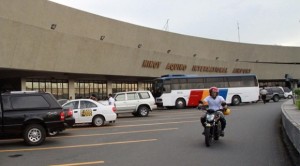New runway eyed for Manila airport
MANILA, Philippines—A new runway is to be built at the Ninoy Aquino International Airport to help ease air traffic congestion at the main gateway to the Philippines before President Aquino’s term ends in 2016, the Civil Aviation Authority of the Philippines said Tuesday.
“The order of the President is that this runway should be ready before his term expires,” Capt. John Andrews, CAAP deputy director general, said at a news briefing.
The proposal for a 2,100-meter-long runway to augment NAIA’s two runways servicing both international and domestic flights was recently given the green light by President Aquino, according to transportation officials.
However, a project proposal has to be formally submitted to the National Economic and Development Authority first for its approval before the Department of Transportation and Communications begins construction.
Andrews admitted that a lot of work has yet to be done and problems solved before the project can get under way.
He said the government must expropriate private land occupied by at least 140 households. “Expropriation and relocation might take longer,” he noted.
The site where the radar system is, the building of the fire and rescue station, and the headquarters of the Philippine National Police’s Aviation Security Group also have to be relocated to another area to accommodate the new runway.
Rodante Joya, chief financial officer of CAAP, said the authority, the DOTC and the Department of Public Works and Highways are also in talks regarding adjustments that will have to be made on plans for flyover on the adjacent Cricumferential Road 5 (C5) extension.
If this is not possible, then the government would have to expropriate more private land around the NAIA complex, Joya said.
“Then, we have to adjust the runway. We’re sorry but some homes will be affected,” he said.
But Andrews said that the NAIA already has cleared a 1,500-meter-long strip of land land. “Here the runway can be immediately started,” he said.
The move to build a third runway was deemed a quick solution to the perennial problem of flight delays due to air traffic congestion. The CAAP had said earlier that airlines lose roughly P7 billion a year mainly from fuel expenses as a result of air traffic congestion. Planes that are unable to land immediately need extra fuel to stay in the air.
From a frequency of 40 planes per hour that the Manila runways can now service, Andrews said, the CAAP expects this would increase to 56 with the new runway.
“This is more than sufficient for the expansion that the DOTC is trying to get,” he said.
Even if President Aquino has expressed willingness to start the new runway project, the plan to have an international airport at Sangley Point in Cavite has not been shelved.
“The runway will not have any influence on the plan to build the Sangley Complex that the Jica (Japan International Cooperation Agency) has recommended,” Andrews said.
Sangley Point, a former US Naval Station, is eyed for a new hub that will serve as alternative to the NAIA.
But the long-term plan, Andrews said, might happen way past the terms of CAAP officials whose positions are co-terminus with President Aquino’s.
RELATED STORIES
Naia Terminal 3 finally starts full operations
